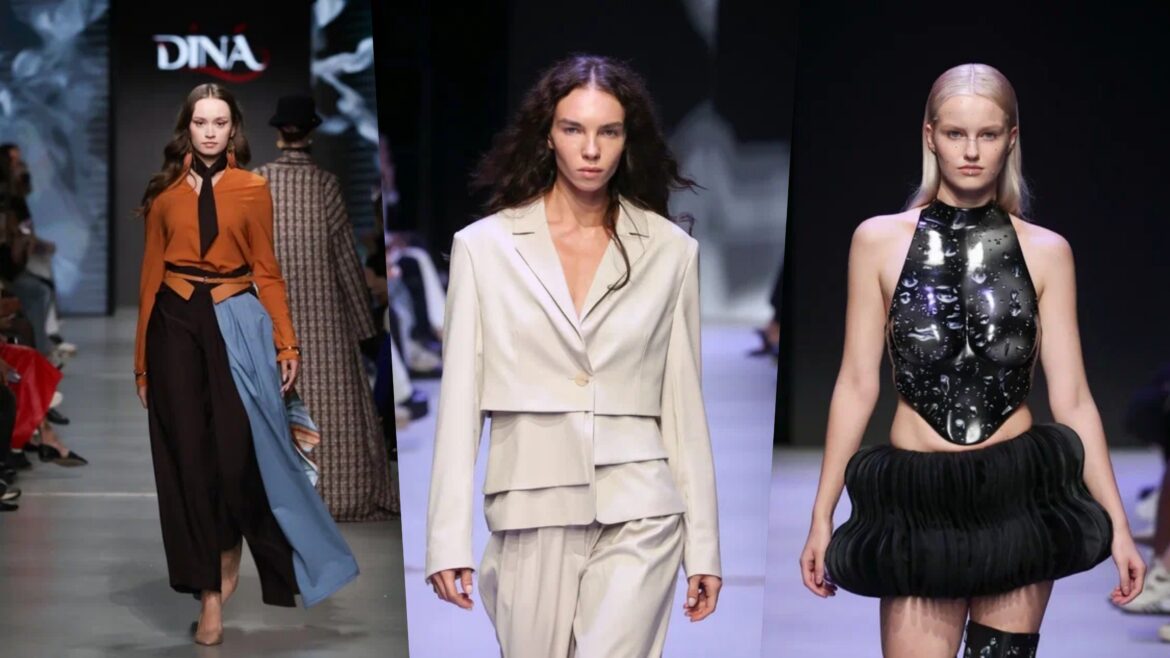Moscow Fashion Week this season was a reminder that fashion is as much about identity as it is about clothes. For six days, the city became a stage for designers from Russia and beyond who wove tradition, innovation, and personal storytelling into collections that felt fresh and deeply human. Being there, I felt the energy shift from one day to the next — a kaleidoscope of aesthetics that together painted the future of fashion.

Day 1: A Bold Opening
The week began with designers setting a high bar. DINÁ explored modest fashion with “Being Yourself – Metamorphosis”, a manifesto of individuality wrapped in natural tones and sustainable fabrics. Persve offered architectural deconstruction inspired by Frank Gehry, bringing art into everyday wear. International energy arrived with Artemisi, the Brazilian brand that fuses technology and couture — 3D printing, resin, and crystals turning garments into wearable sculptures. The mood was daring, experimental, and unapologetically global.

Day 2: Identity and Heritage
Heritage took center stage with designers revisiting cultural roots. Collections leaned on artisanal craft, from modernized traditional silhouettes to bold reinterpretations of folkloric motifs. It was a day of grounding — fashion as a way of carrying history forward while making it feel current and wearable.

Day 3: Femininity Reimagined
Highlights included LOST GENOME’s Japanese-inspired minimalism, HATSIBANA’stribute to Caucasian tradition, and Gapanovich’s balletic spectacle “Premonition of the Ball”. ODOR’s vintage fabrics and antique ribbons reminded us that slow fashion can be poetry, while Alina Assi and Alena Nega brought two contrasting visions of eveningwear: one romantic, one restrained. Watching them back-to-back was like seeing two sides of the same city — Moscow in dialogue with itself.
Day 4: Future Voices
Emerging designers made their mark on Day 4, with collections brimming with youthful experimentation. There was a strong play of color and proportion, streetwear elements, and an evident push to redefine what Russian fashion can look like for Gen Z. These shows felt less polished but more urgent — the kind of raw creativity that reminds you fashion is also rebellion.

Day 5: Couture and Craft
By Day 5, the week had found its rhythm. Collections leaned into luxury and handwork: delicate embroidery, fluid silks, and intricate detailing that highlighted the value of artisanship. The runway shimmered with gowns that were both statement pieces and love letters to craftsmanship. It was fashion for those who want beauty not just to be seen, but to be felt.

Day 6: Closing on a High Note
The finale was nothing short of cinematic. Designers layered meaning into every look, whether through theatrical silhouettes or symbolic color choices. The last night felt like a culmination — heritage, innovation, sustainability, and individuality all converging on the runway. The applause wasn’t just for the clothes but for the stories behind them.
What Moscow Fashion Week Told Us
Six days, dozens of designers, and one undeniable truth: Moscow is positioning itself as a global fashion hub. The strongest shows weren’t about chasing trends but about telling stories — of culture, memory, craftsmanship, and self-expression.
Leaving the venue on the final night, I realised the collections that stayed with me weren’t the loudest or the flashiest. They were the ones that whispered identity, carried history, and hinted at the future. And that, in the end, is what makes fashion timeless.

